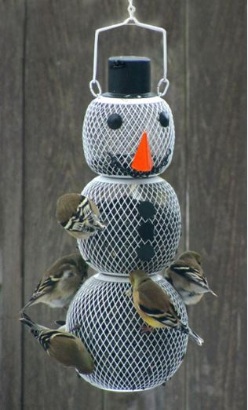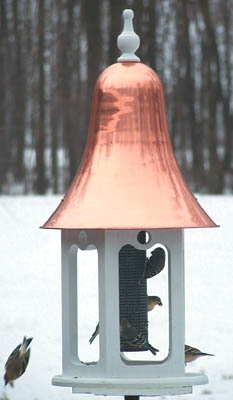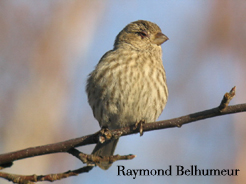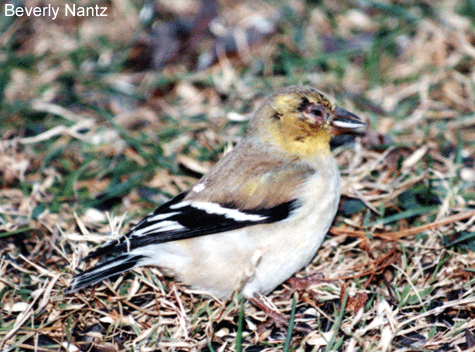-
Watch Out for this at Wild Bird Feeders
Seeing more traffic at your feeders lately? The recent cold snap and first freeze of the season has finches flocking to feeders. The frost will damage some plants with fruit or berries, and likely zap most flying insects. As the cold wears on, these natural food sources disappear so wild bird feeders start seeing increased activity.
Aside from the usual suspects like cardinals, chickadees titmice and wrens, goldfinches are still around from summer- but with their new winter feathers they’re looking a bit drab as seen on
this snowman feeder. House Finches, who tend to travel in large flocks are crowding feeders now too, and they appear at new feeding areas in large groups. These birds are prone to a respiratory infection (see Cornell Lab for the history) that may infect other birds through bird feeders. The disease is actually conjunctivitis, though it’s not transferred to humans.
Affecting their eyes, the bacteria itself is not fatal, but infected birds usually end up blind and die from starvation or predation. You’ll see them with swollen, half-closed, or crusty eyes, and sometimes completely swollen shut. They go where it’s easy to feed, on the ground scavenging below feeders or staying in a nearby tree. It’s really a sad sight, but knowing that other birds may become infected through your feeders is worse.
This is why maintaining clean feeders is important. Non-porous surfaces like glass, copper, recycled plastic or vinyl are much easier to clean than wood. These wild bird feeders promote a healthier environment because bacteria can’t settle into cracks and crevices. There are a few easy steps to help prevent the spread of conjunctivitis and what to do should you see an infected bird in your yard.
- Space feeders as widely as possible to divert large crowds from gathering at one spot.
- Clean feeders with a 10% bleach solution (1 part bleach to 9 parts water) with extra attention to feeder ports. Rinse thoroughly and air dry.
- Rake fallen seed and bird droppings beneath feeders, keeping this area clean.
- Take feeders down if you see one or two birds with infected eyes, and clean as suggested above.
- Some folks even wait to hang feeders again, encouraging the flock to move on.




